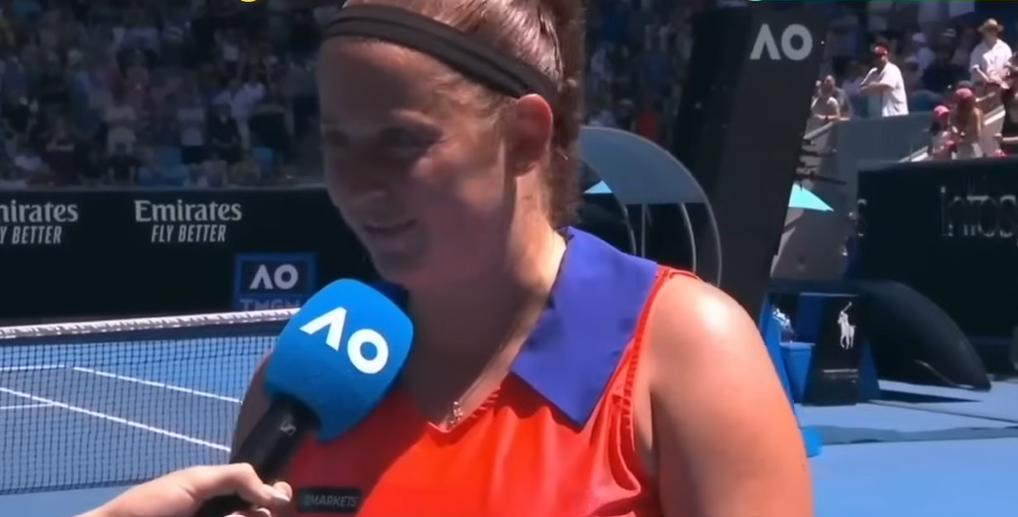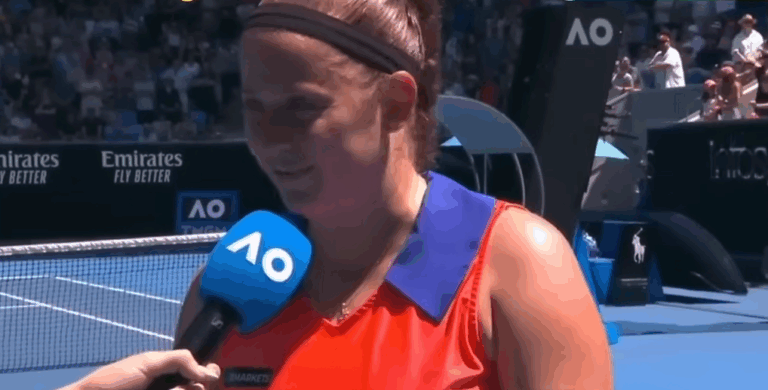Some people are obsessed with Jelena Ostapenko’s weight of 68 kg. However, she has continuously silenced critics on the court with performances that are more effective than any press release. Her talent demands respect, but her weight may arouse curiosity.
She demonstrated during the 2024 and 2025 seasons that strength, accuracy, and mental toughness are more important than numbers. Top-ranked players have been repeatedly shaken by her explosive, unpredictable, and risky style of play. Notably, she has never lost to Iga Świątek, regarded as one of the most dominant players of this generation.
This is especially intriguing because, despite criticism of her physique, she keeps adding awards to her collection. She and Lyudmyla Kichenok won the US Open doubles championship in September 2024. Their chemistry was not only lively, but it was also very evident from how well-coordinated and astute their movements were. It seems wildly inaccurate to suggest that Ostapenko’s weight has caused him to slow down.
| Name | Jeļena “Aļona” Ostapenko |
|---|---|
| Date of Birth | June 8, 1997 (Age 28) |
| Birthplace | Riga, Latvia |
| Nationality | Latvian |
| Height | 1.77 m (5 ft 10 in) |
| Weight | 68 kg (150 lbs) |
| Turned Pro | 2012 |
| Singles Titles | 9 (including 2017 French Open) |
| Doubles Titles | 11 (including 2024 US Open) |
| Highest Singles Rank | No. 5 (March 19, 2018) |
| Highest Doubles Rank | No. 3 (July 14, 2025) |
| Current Singles Rank | No. 20 (June 23, 2025) |
| Languages | Latvian, Russian, English |
| Reference | https://en.wikipedia.org/wiki/Jeļena_Ostapenko |

Society has become more sensitive to the representation of female athletes during the last ten years. Simone Biles was questioned for putting her mental health first, while Serena Williams was criticized for her muscular physique. Ostapenko is part of this tradition of women who resist, not always verbally but always through action. Without the need for rebuttals, her performance speaks for itself.
She had won 20 singles and doubles titles by the beginning of 2025. She has prevailed in indoor hard-court matches, lengthy clay-court rallies, and three-set thrillers thanks to her body. When you watch Ostapenko smash a forehand down the line at 120 km/h, the notion that a female athlete should have a specific appearance seems incredibly antiquated. Her strength is evident in each and every stroke she makes; it is not merely hypothetical.
She resembled tennis greats like Maria Sharapova in her aggression when she first appeared at Roland Garros in 2017. Ostapenko, however, lacked Sharapova’s customized media persona. She brought fire. Fans still admire that same fire, particularly when she rolls her eyes at a missed call, yells loudly after an ace, or wears bright colors. Her genuineness works incredibly well to win over fans who appreciate athletes who are real, not staged.
Following the 2023 Australian Open, when social media was inundated with side-by-side photos comparing her figure across seasons, the weight debate reappeared. Rather than reacting in public, she intensified her training. She beat Świątek once more a few months later. That victory, which both fans and commentators praised, was more than just a statistic; it was a turning point that put an end to divisive discussions and brought attention to performance, which is what really counts.
She is demonstrating to a new generation of athletes that there are multiple ways to achieve excellence by accepting her body type. Her 68 kg body is very adaptable; it can support power, speed, and balance. It conveys confidence, which is more significant. Confidence that is earned through long games in hot stadiums rather than faked in interviews.
She is resilient off the court as well. She currently co-owns a sustainable fashion project with her mother, @j.o.clothes1997. Whether she’s showcasing her favorite red lipstick, baking Latvian treats, or posing on TikTok with her dog, she’s living life to the fullest. She is captivating because of her attitude rather than her weight.
Public opinion has significantly improved in recent months. Instead of talking about appearance, commentators now concentrate more on her strategies, shot choices, and enhanced footwork. This change is especially advantageous for all athletes who are subjected to unfair treatment, not just Ostapenko. Finally, the message is getting through: being elite doesn’t require being thin.
Ostapenko’s fame is empowering for young girls who aspire to be champions. She defies stereotypes, which is precisely why she is a good fit for the sport’s future. By remaining vocal, competitive, and unapologetically herself, she is changing the definition of tennis greatness.
Her responses at press conferences are frequently direct, occasionally tinged with sardonic humor, and always based on her personality. She stands out in a sea of polished soundbites because she refuses to fit in or shrink to fit a stereotype. She isn’t just playing for points; she’s playing for acceptance of who she is, free from criticism of her appearance, which makes her presence on the WTA Tour feel especially novel.
Ostapenko will probably continue to play a major role in the discourse surrounding athlete wellness in the years to come. Her triumphs demonstrate that achieving peak performance requires heart, strategy, and endurance rather than a dress size. She is unquestionably wealthy in all three.


